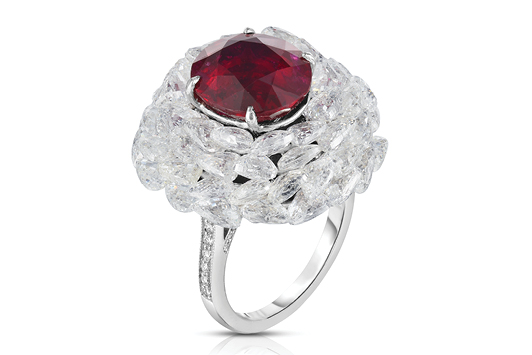
When a ruby and pink-sapphire mine opened at Aappaluttoq in southwest Greenland in 2017, the colored-gemstone community welcomed the news with excitement. Having made a clear commitment to sustainability, traceability and responsible mining, Greenland Ruby became the first colored-gem miner to join the Responsible Jewellery Council (RJC) in 2019. Each of its gems — available from mili-sizes to over 50 carats — is traceable from mine to market. With an estimated 10 years’ worth of gem-quality ruby and pink sapphire at its site, Greenland Ruby expects to extend this lifespan by adding two other licensed mining areas.
Here, Hayley Henning, the company’s chief commercial officer, discusses what these stones can offer the marketplace.
What’s so special about Greenland rubies?
The laboratories and geologists have confirmed that these gems are close to three billion years old, because Greenland was among the first of the Earth’s formations. The inclusions and the unique fingerprints within these gems tell that story. The laboratories have shown us that the gems represent themselves as Greenlandic. There’s been a lot of research over the last couple of years, and now we’re putting these gems into the marketplace. There’s a great excitement, because with the ruby market comes a lot of intrigue, a lot of mystery, a lot of not really knowing how gems have come into the marketplace, but with the rubies from Greenland, we check each and every gem from the mining operation. So it’ll shed a whole new light on the industry in general.
What are the distinct features of the gems mined in Greenland?
The rubies and pink sapphires from Greenland have inclusions. It’s the nature of the deposits. The crystal is still encased in the rock when it’s mined, so it is a very difficult and expensive process to remove the crystal from the rock. And the gems need to be treated because they have these inclusions that are nearly three billion years old. The responsible way for us to bring these gems into the marketplace is to treat them with borax, which is acceptable within the industry. It stabilizes the gem, heals the fractures, and prepares the gem for cutting in any shape and any size. We do a lot of cabochons, owing to the fact that the gems are included and the crystal presents itself in a rounded shape. This is a point of differentiation because the Greenlandic rubies and pink sapphires present beautiful cabochons.
What hues are available?
We have a spectrum of colors, ranging from a deep, dark red, which is almost black, to a very light pink. We developed a very specific color spectrum that features 10 different colors, three of which are ruby.
Where are the gems cut and polished?
All of our processing is done in Thailand because it is the ruby capital of the world. These are the experts on this material, which is extremely complicated to deal with. All of our gems are treated with borax, and it’s done with our partner workshop. So everything is checked and traced through the processing. Our cabochons get cut in India in Jaipur. We are processing 100 kilograms over a month. And it all goes back to a central hub in Bangkok for sorting and distribution.
How did you introduce the gems to the retail scene?
We did a launch with Hartmann’s, a retailer in Denmark. [The designer] couldn’t wait to get his hands on these rubies, and created a collection of 200 pieces, which sold out within three weeks of him launching it before the Christmas season in 2018. It showed us the immense interest in the rubies and the pink-sapphire collection. So we are rolling that model out within the US and other European countries.
Italian brand Pomellato also used a Greenland ruby for its Nuvola ring. How did this collaboration fit your overall strategy?
Our value system aligns with Pomellato’s whole idea of responsible sourcing, being held to the highest of northern European standards. In the past, it was very difficult for companies that have these kinds of standards in place to work with rubies from other origins, because there’s just not a lot of transparency in the marketplace. So they were delighted to work with us and launch a new ring for their Earth Day 2021 celebrations, which was just so perfect.
What’s next for Greenland Ruby?
We are launching our RubyCloud, our digital online showroom, which is strictly business-to-business (B2B). The technology that we’re using is sophisticated and extremely true to life, with 360-degree video imaging that almost shows the gem exactly as it is in person. Once people register and get approved for the RubyCloud, they will be able to browse and buy from their computers wherever they are. And this is going to be a huge opportunity, because what we found in the last year is that people can’t just jump on a plane to Bangkok or to a trade show, so we really want to bring accessibility to the trade in a dynamic and interesting way.
greenlandruby.glArticle from the Rapaport Magazine - July 2021. To subscribe click here.